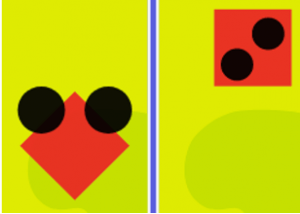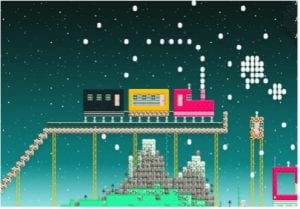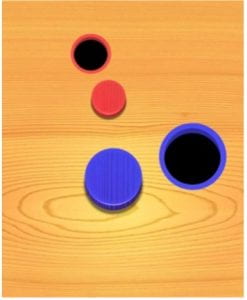Spatial skills include the ability to transform and remember shapes, objects, and locations, and to mentally manipulate structures. People frequently exercise these abilities to do a variety of tasks from cutting a pizza pie to locating oneself on a map. For children, spatial skills may be particularly important because they support formal math knowledge, and can help set the foundation for children’s learning in science, technology, engineering, and mathematics (STEM). One remarkable characteristic of spatial skills is that with practice people, children included, can improve their spatial abilities. This means, the more children engage in playful activities that involve spatial thinking, such as puzzles and blocks, the stronger their spatial skills will be.
In this study we investigate another spatial play activity: touchscreen games that challenge children to think in spatial ways! These games are easily accessible to parents and children and are fun and engaging. Our main question was simply, are children engaging in spatial thinking when they play touchscreen games that have a spatial focus? To answer our question, we had children, ages 3 to 6 years, play three touchscreen games that are available from IOS or Google Play. The games were RelationShapes (free), Busy Shapes ($2.99) and Toca Blocks ($3.99). Children enjoyed them all! Using a variety of ways to measure children’s spatial abilities and thinking we found that for 3- and 4-year-olds these games were great for challenging children to think in spatial ways, but that 5- and 6-year-olds may need games that are a little more difficult. During the study sessions children only played the easiest levels – so we recommend having your 5- and 6-year-old work with you or an older sibling to play some of the more challenging levels towards the end of the game!
RelationShapes

Busy Shapes


